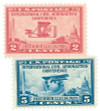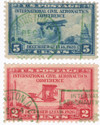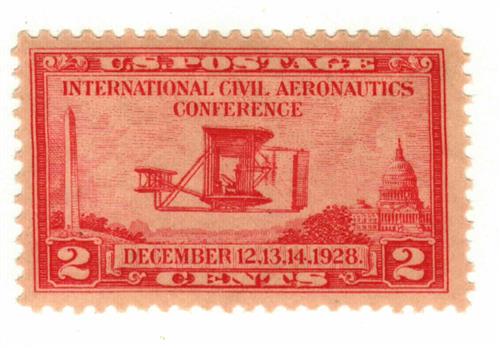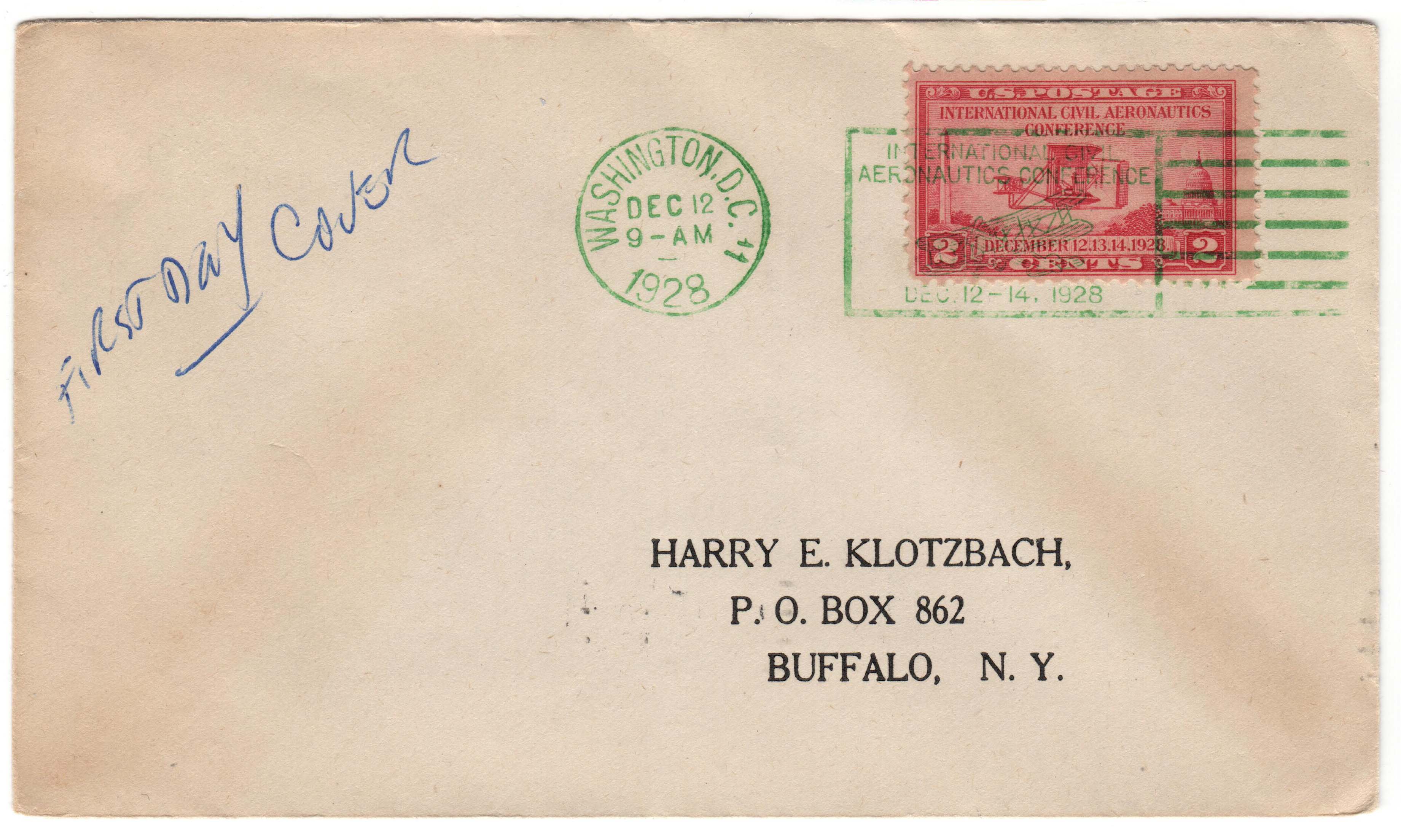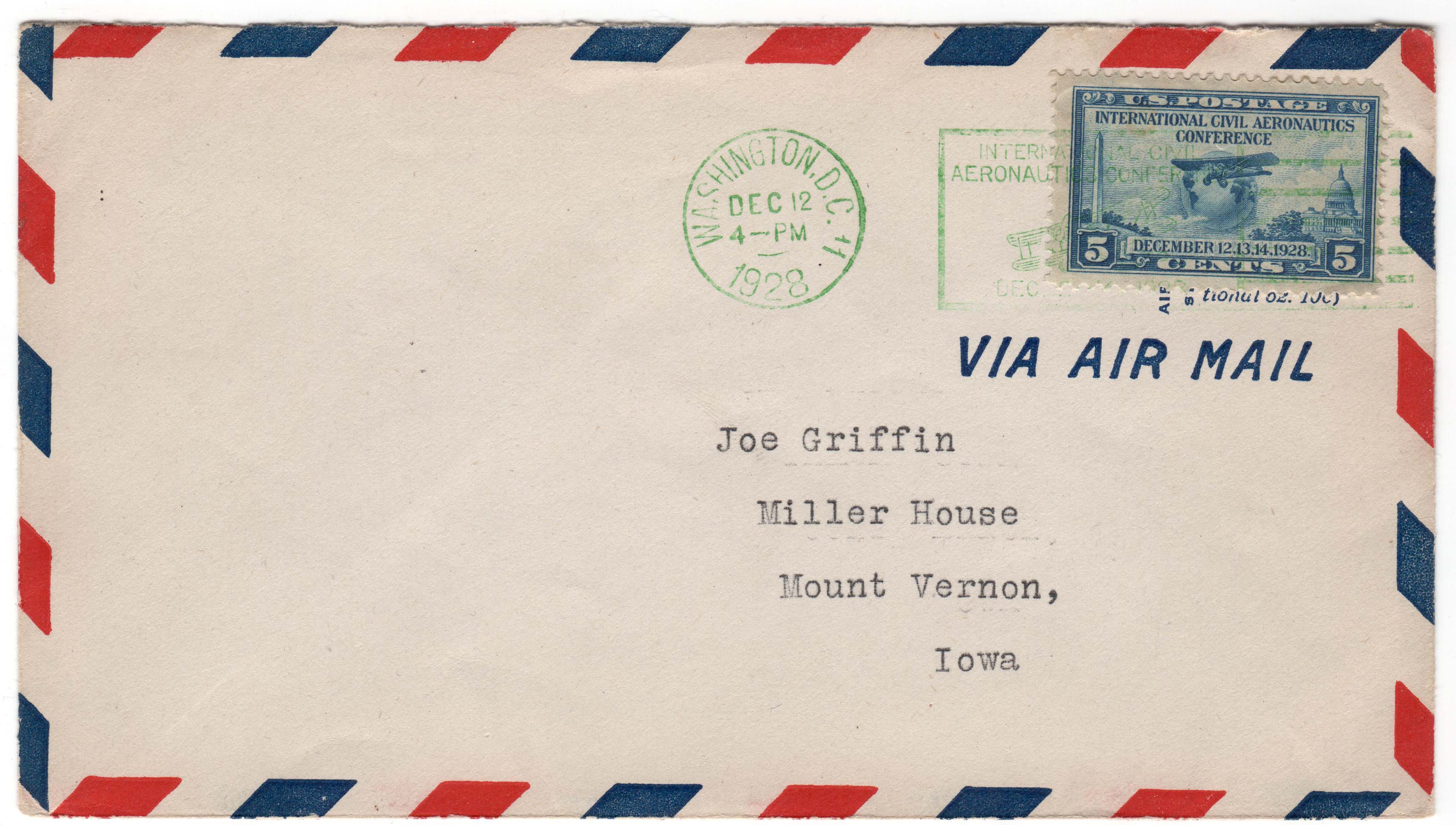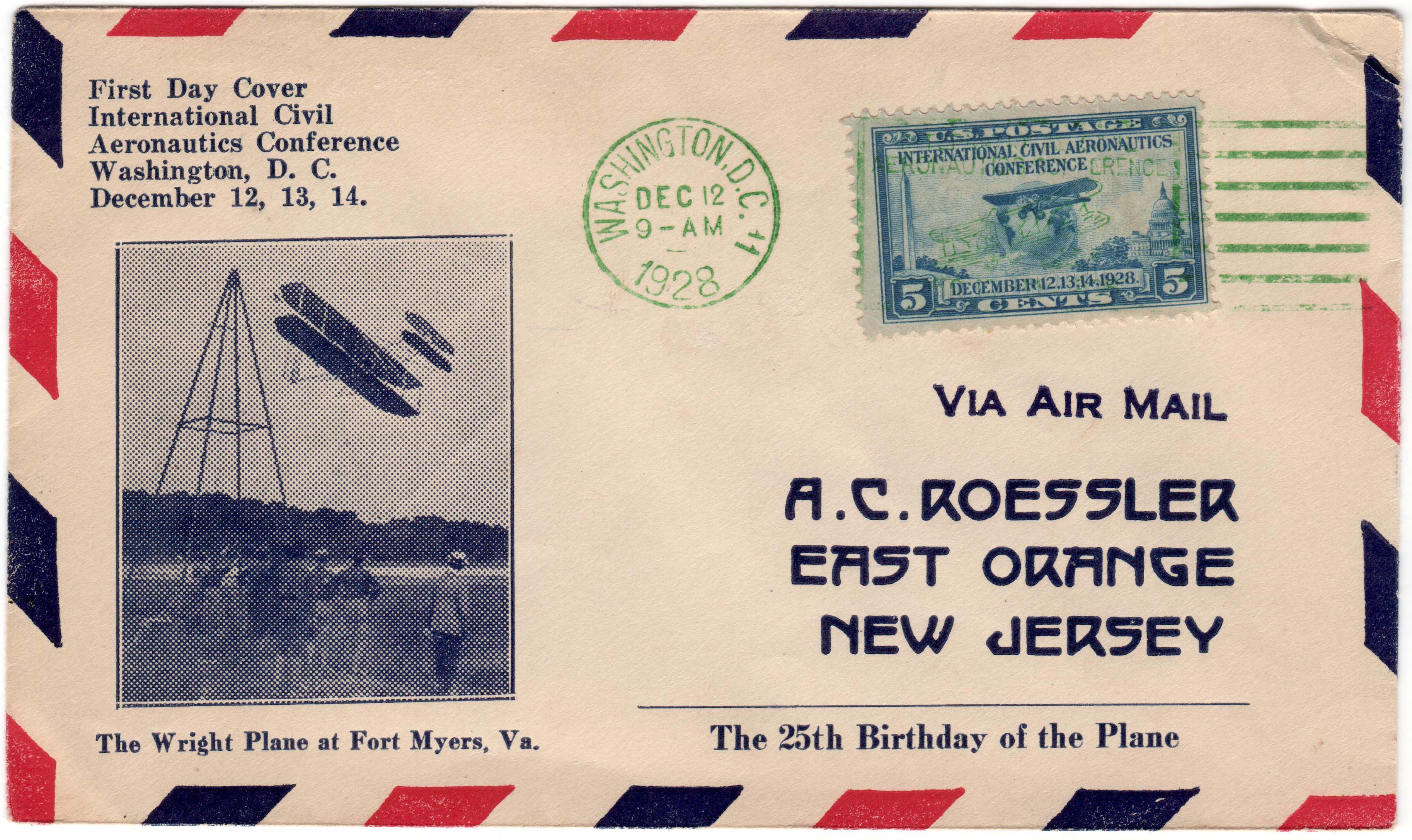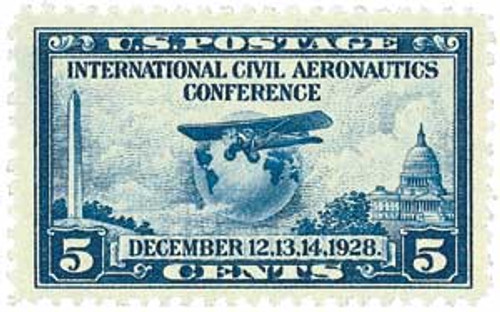
# 649-50 - 1928 International Civil Aeronautics Conference - set of 2
1928 2¢ and 5¢
International Civil Aeronautics Conference
The International Civil Aeronautics Conference
President Calvin Coolidge is credited with the idea for the conference. A year earlier he had written a note to the Conference of the Aeronautical Industry that was meeting in Washington, DC. He suggested that they hold an international conference in the nation’s capital the following year to commemorate the 25th anniversary of the Wright brothers’ first powered flight. He also thought the conference could help establish America as a world leader in aviation.
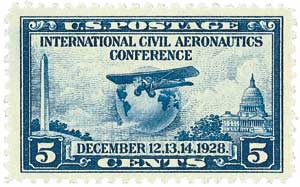
They responded positively and the conference was set for December 12 to 14, 1928. Attendees were also invited to the International Aeronautical Exhibition in Chicago the week before the conference. The exhibition included nearly every American plane in production at the time.
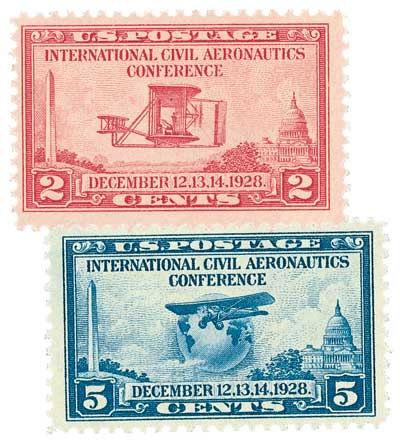
When the conference opened on December 12, President Coolidge, the honorary chairman, addressed those in attendance, “Twenty-five years ago, at Kitty Hawk, North Carolina, occurred an event of tremendous significance. It was the first extended flight ever made by man in a power-driven heavier-than-air machine. How more appropriately could we celebrate this important anniversary than by gathering together to consider the strides made throughout the world in the science and practice of civil aeronautics since that day and to discuss ways and means of further developing it for the benefit of mankind?”
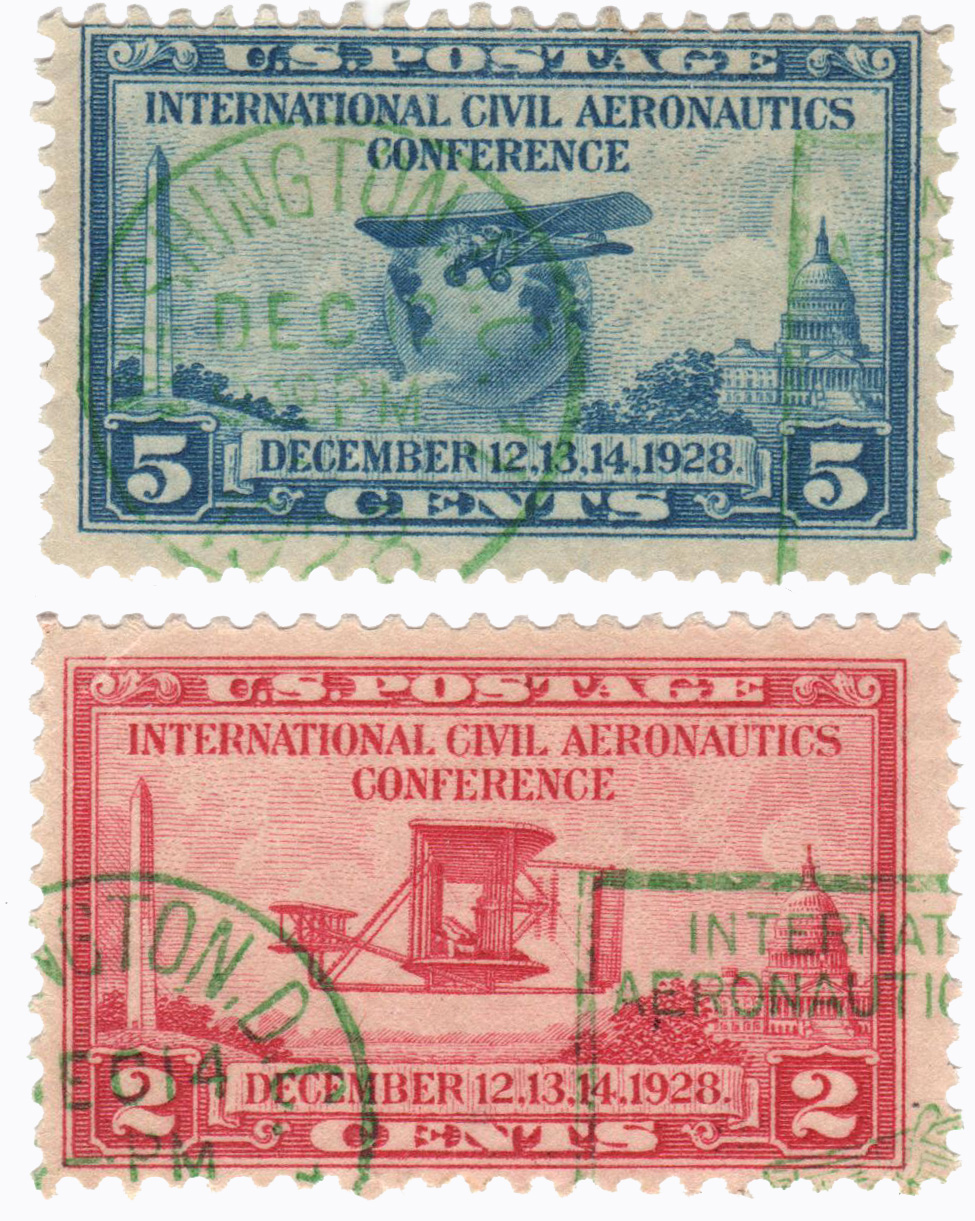
And he went on to say “All nations are looking forward to the day of extensive, regular, and reasonably safe intercontinental and interoceanic transportation by airplane and airship. What the future holds out even the imagination may be inadequate to grasp. We may be sure, however, that the perfection and extension of air transport throughout the world will be of the utmost significance to civilization. While the primary aim of this industry is and will be commercial and economic… but no less surely, will the nations be drawn more closely together in bonds of amity and understanding.”
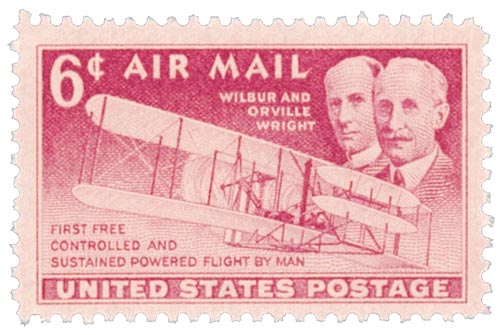
In all, 77 official and 39 unofficial delegates from 50 foreign countries attended. There were also several American delegates, technical representatives and committee members, bringing the conference’s total attendance to 441. Orville Wright was the guest of honor (his brother Wilbur had died in 1912) and Charles Lindbergh received a special award for his triumphs in aviation.
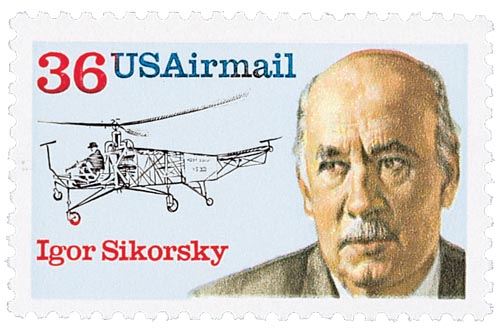
Each day of the conference they attended meetings and lectures with different themes. The first day focused on international air transport, the second day on airway development, and the third day on foreign trade of planes and equipment.
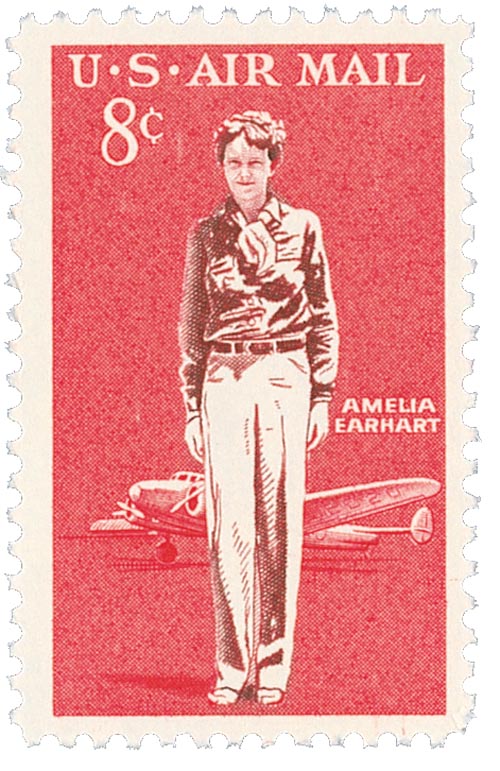
Throughout the conference and after it ended, the guests were treated to banquets and aerial demonstrations in and around Washington, DC. The delegates then took a steamship down to Kitty Hawk, North Carolina for a series of events honoring the Wright brothers’ historic flight.
The conference was considered a major success. It helped the US and other nations share their knowledge and concerns. It was also one of the first national events to fully recognize the importance of the Wright brothers’ historic flight.
We have a handful of #649 and #650 First Day Covers available:
1928 2¢ and 5¢
International Civil Aeronautics Conference
The International Civil Aeronautics Conference
President Calvin Coolidge is credited with the idea for the conference. A year earlier he had written a note to the Conference of the Aeronautical Industry that was meeting in Washington, DC. He suggested that they hold an international conference in the nation’s capital the following year to commemorate the 25th anniversary of the Wright brothers’ first powered flight. He also thought the conference could help establish America as a world leader in aviation.

They responded positively and the conference was set for December 12 to 14, 1928. Attendees were also invited to the International Aeronautical Exhibition in Chicago the week before the conference. The exhibition included nearly every American plane in production at the time.

When the conference opened on December 12, President Coolidge, the honorary chairman, addressed those in attendance, “Twenty-five years ago, at Kitty Hawk, North Carolina, occurred an event of tremendous significance. It was the first extended flight ever made by man in a power-driven heavier-than-air machine. How more appropriately could we celebrate this important anniversary than by gathering together to consider the strides made throughout the world in the science and practice of civil aeronautics since that day and to discuss ways and means of further developing it for the benefit of mankind?”

And he went on to say “All nations are looking forward to the day of extensive, regular, and reasonably safe intercontinental and interoceanic transportation by airplane and airship. What the future holds out even the imagination may be inadequate to grasp. We may be sure, however, that the perfection and extension of air transport throughout the world will be of the utmost significance to civilization. While the primary aim of this industry is and will be commercial and economic… but no less surely, will the nations be drawn more closely together in bonds of amity and understanding.”

In all, 77 official and 39 unofficial delegates from 50 foreign countries attended. There were also several American delegates, technical representatives and committee members, bringing the conference’s total attendance to 441. Orville Wright was the guest of honor (his brother Wilbur had died in 1912) and Charles Lindbergh received a special award for his triumphs in aviation.

Each day of the conference they attended meetings and lectures with different themes. The first day focused on international air transport, the second day on airway development, and the third day on foreign trade of planes and equipment.

Throughout the conference and after it ended, the guests were treated to banquets and aerial demonstrations in and around Washington, DC. The delegates then took a steamship down to Kitty Hawk, North Carolina for a series of events honoring the Wright brothers’ historic flight.
The conference was considered a major success. It helped the US and other nations share their knowledge and concerns. It was also one of the first national events to fully recognize the importance of the Wright brothers’ historic flight.
We have a handful of #649 and #650 First Day Covers available:



